Only 47% of customers remain with their primary telecom operator for more than 5 years, while churn rates of telecom providers average between 10 and 67% annually. Achieving customer loyalty in the telecom sector is challenging, and several major factors contribute to this difficulty. Given that acquiring a new customer is anywhere from 5 to 25 times more expensive than retaining an existing one and that increasing customer retention rates by just 5% can boost profits by 25% to 95%, it’s crucial to understand these underlying reasons.
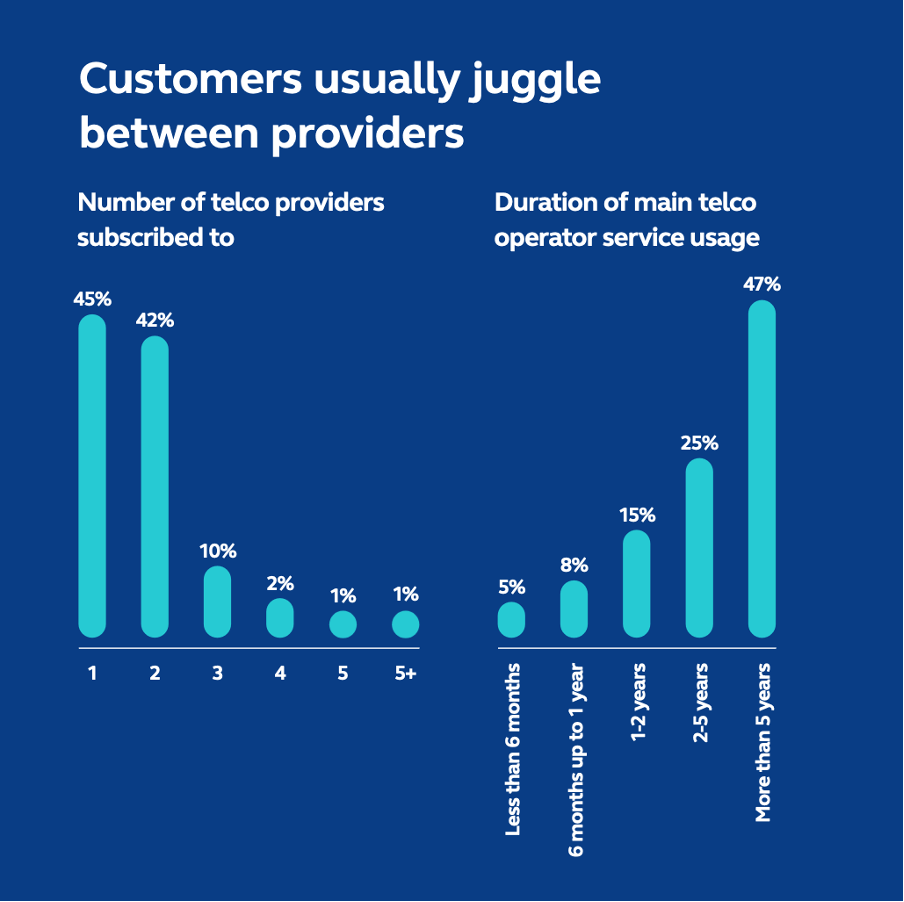 Source: Infobip
Source: Infobip
What is customer loyalty in telecom and why is it important?
Customer loyalty is when customers reward a company with repeat business over time.
Loyal buyers consistently choose to do business with a particular brand and often defend it against competitors.
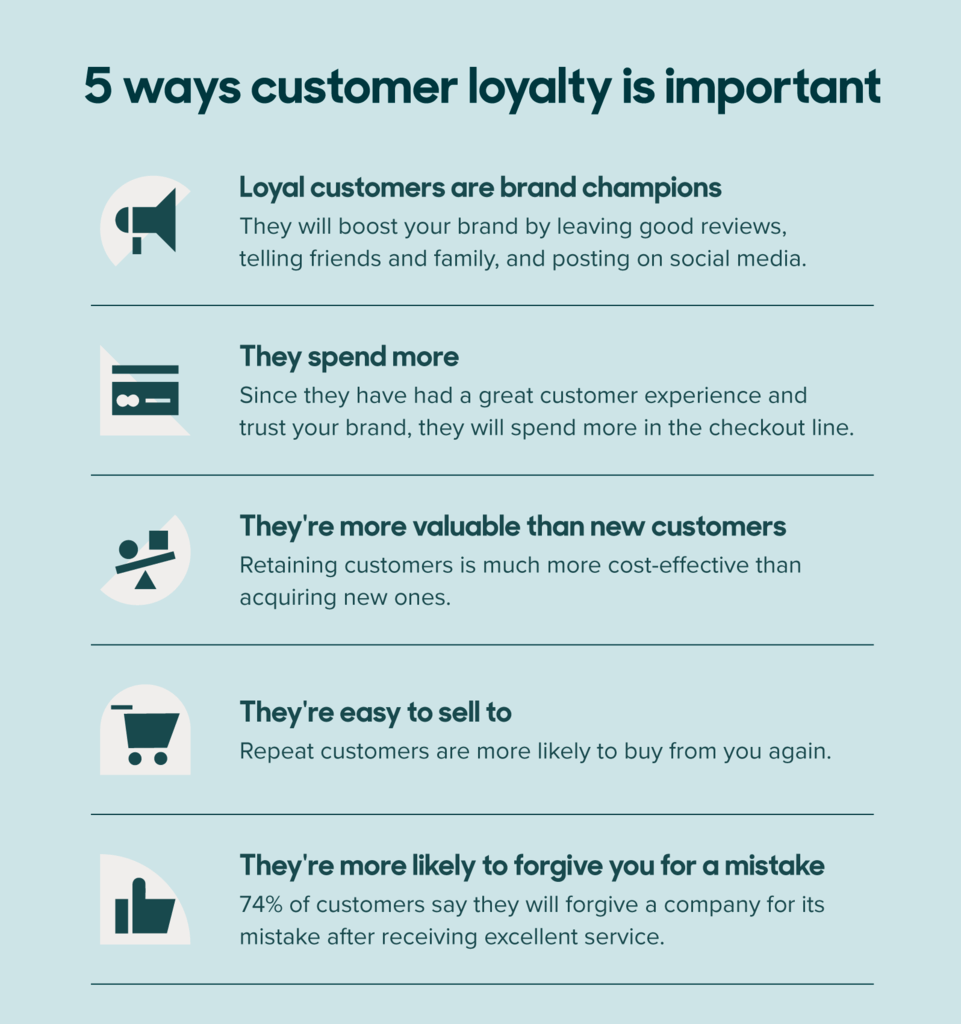 Source: Zendesk
Source: Zendesk
How to improve customer loyalty in telecom?
Provide a personalised customer experience
One of the main reasons for poor customer loyalty in telecom is the lack of personalisation and the prevalence of generic customer experiences. No one likes to feel like just another number. In fact, 80% of consumers say they are more likely to do business with organisations that provide tailored experiences.
However, only 5% of telecom providers fully leverage data-driven personalisation to its full potential.
This is a missed opportunity, as 39% of telecom customers indicated that personalised promotions from a competing provider could prompt them to switch. In comparison, 53% of customers don’t remain loyal to their current provider for more than five years due to poor customer experience (CX).
The cost of these customer losses is significant, amounting to approximately US$1.6 trillion annually for businesses globally.
Yet, telecom providers can make substantial strides in customer loyalty by prioritising and improving CX. According to Infobip, 46% of telecom customers say personalised promotional messages could influence them to upgrade their existing services.
In short, personalisation enhances the customer experience in telecom, positively impacting customer loyalty and, therefore, driving ARPU in telecom industry.
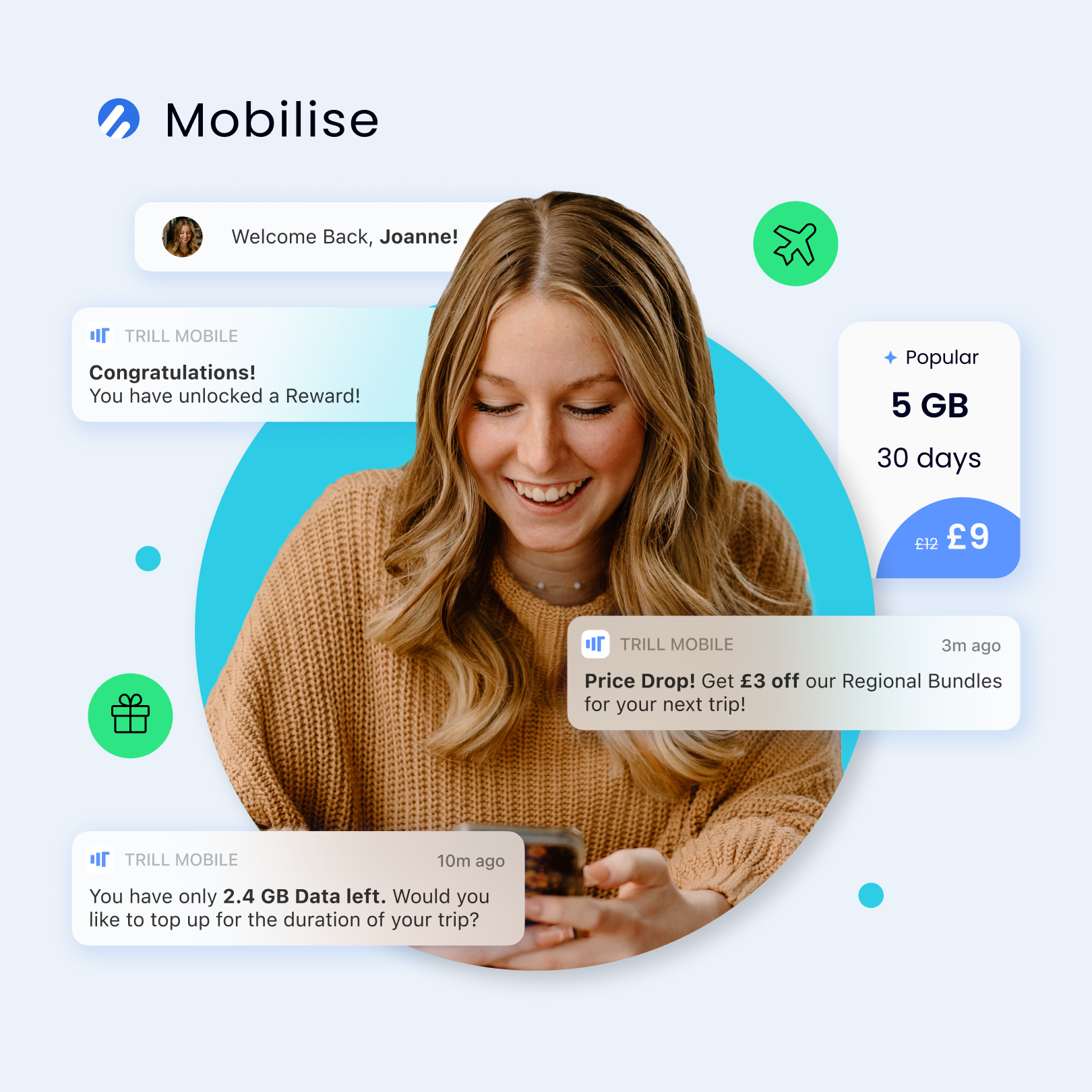
Offer loyalty programs
Another key reason for low customer loyalty in telecom is the lack of incentives to foster long-term commitment. Many telecom providers offer referral programs or discounts in the first few months of a subscription to acquire new users, but these perks typically stop there.
This is where a loyalty program can make a significant difference.
By examining the best-performing loyalty programs, it’s clear that offering freebies, exclusive offers, member-only perks, and milestone rewards can greatly enhance customer loyalty in the telecom sector. In fact, top-performing loyalty programs report a 78% increase in engagement, a 46% increase in loyalty, and a 51% boost in spending. Additionally, 73% of consumers are more likely to recommend a brand with a strong loyalty program to friends and family, bringing in new customers at no extra cost.
Considering that 65% of a company’s revenue typically comes from repeat business and that 85% of consumers say loyalty programs increase their likelihood to stick with a brand, while 66% adjust their spending to maximise points, implementing loyalty programs in telecom is an obvious win.
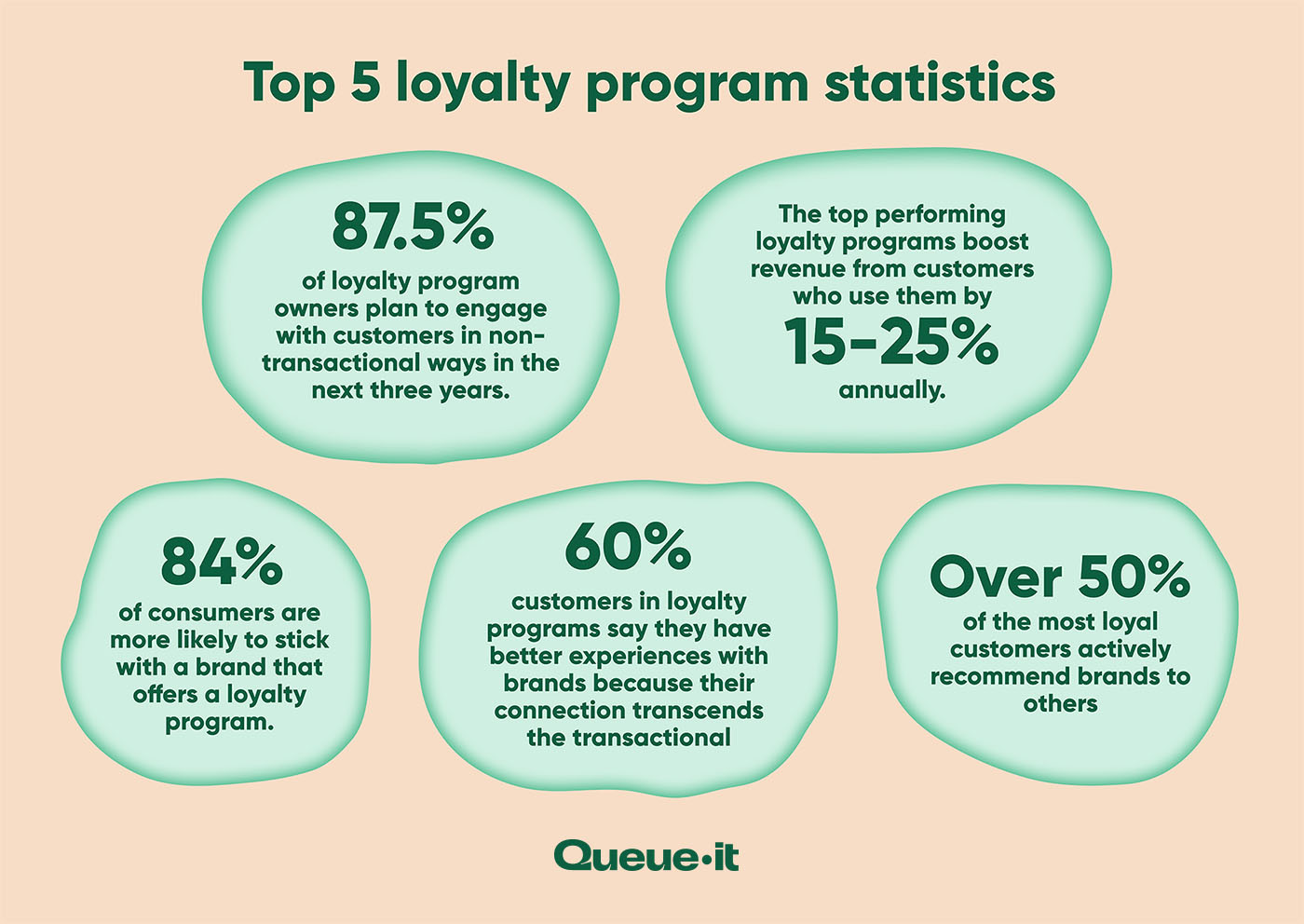 Source: Queue-it
Source: Queue-it
Excel at customer support
Perhaps the biggest contributor to poor customer loyalty in telecom is the quality of customer support. According to a report by Infobip, 96% of customers who switch telecom operators cite poor customer support experiences as the main reason for their decision.
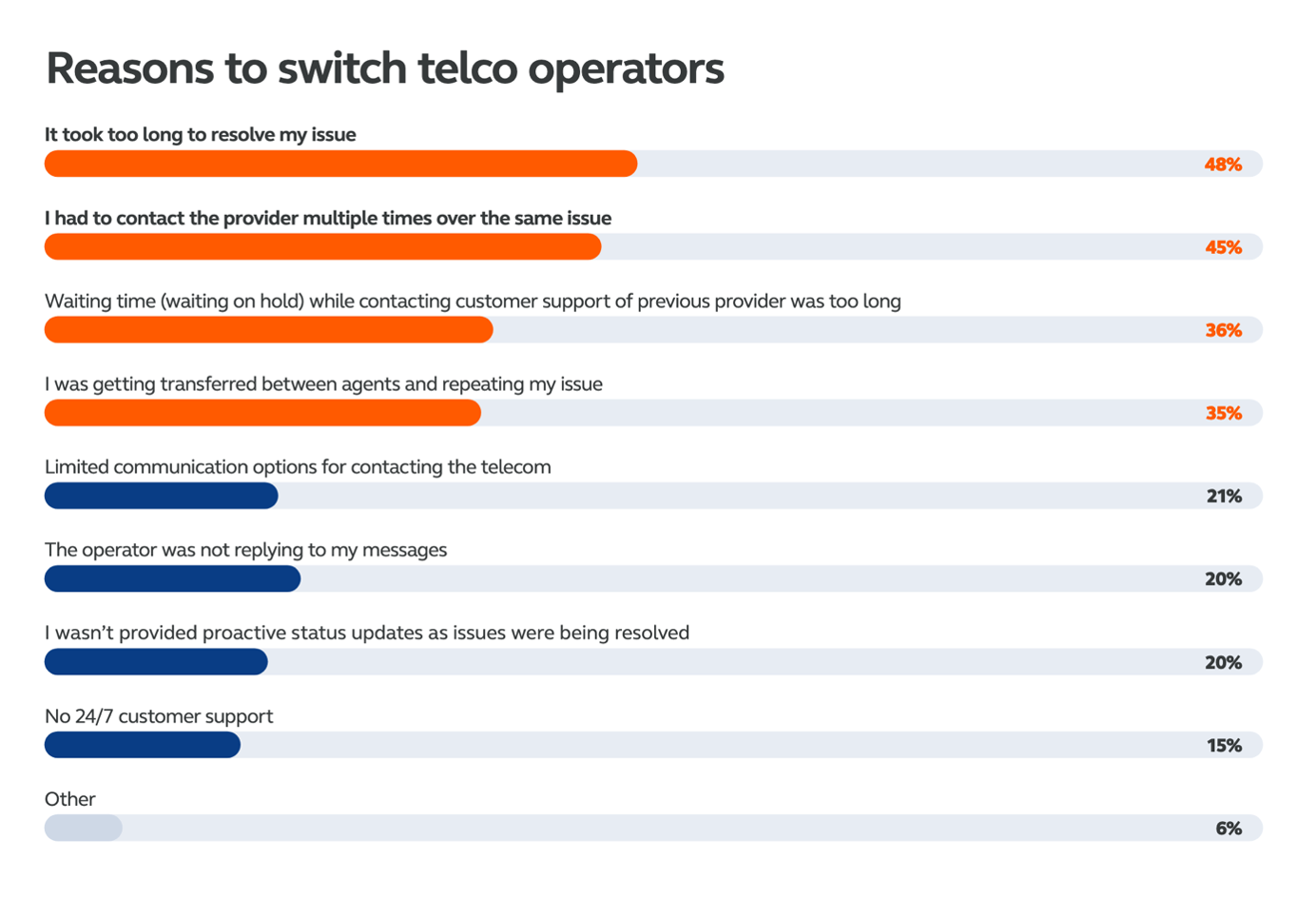 Source: Infobip
Source: Infobip
However, solely blaming customer support teams isn’t the solution; the issue is more complex. To deliver effective and satisfying customer support, agents need to understand the customers they engage with and personalise their interactions. This requires centralised and easily accessible customer histories, a solid understanding of customer data, the orchestration of personalised customer journeys, and automation for repetitive or easily solvable queries.
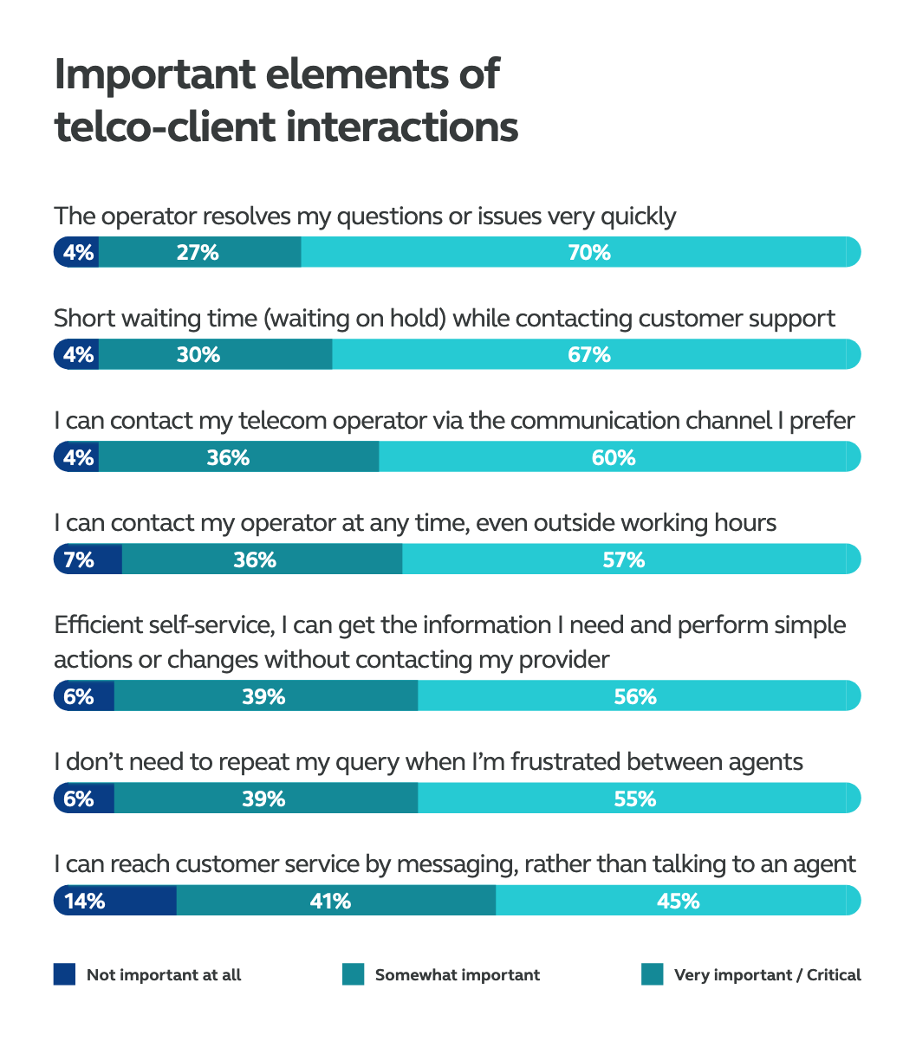 Source: Infobip
Source: Infobip
One of the top three priorities in telecom customer interactions is the ability to contact the provider through a preferred channel, with over 90% of consumers stating this is somewhat or very important to them. It’s crucial for telecom providers to understand which channels their customers prefer in today’s landscape.
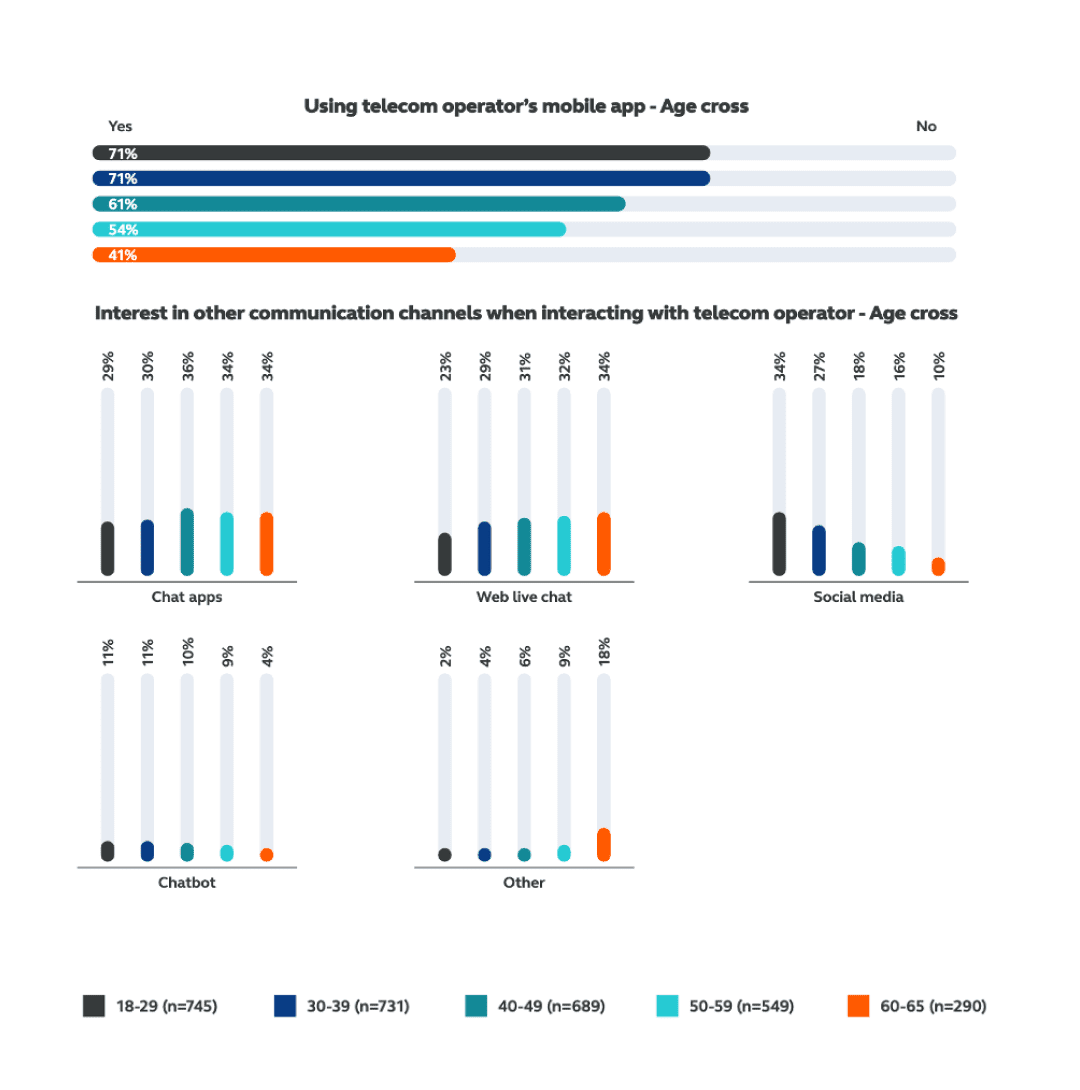 Source: Infobip
Source: Infobip
Unsurprisingly, different age groups prefer different communication channels. While a telecom provider’s mobile app is the top choice across all age groups, younger consumers (71% of those aged 18–39) also favour social media channels, whereas older customers (66% of those aged 50–65) lean towards web live chat.
RECOMMENDED READING
Fifteen years ago, the typical consumer used only a few digital touchpoints for making purchases, with just 7% using more than four. Today, consumers interact with nearly six touchpoints on average, and 50% frequently use more than four. This underscores the need for omnichannel customer support solutions.
Research shows that companies with omnichannel engagement strategies retain 89% of their customers. Furthermore, 79% of businesses report that offering live chat has positively impacted their sales, revenue, and customer loyalty. However, it’s important to note that 66% of customers expect a response within 10 minutes, while only 46% of surveyed customers say their telecom provider meets this expectation.
Finally, customers indicated that if they could communicate with their telecom provider through their preferred channel, they would take the following actions:
- Recommend the provider to a friend: 74%
- Include their entire family in the package: 65%
- Purchase additional services from the provider: 68%
- Become a new customer: 61%
- Switch from a different telecom operator: 60%
Communicate proactively for customer loyalty in telecom
Customer success is closely linked to proactive communication, yet many telecom providers overlook its importance. Research shows that 20% of consumers switch telecom providers due to the lack of proactive status updates while their issues are being resolved. This is particularly surprising when considering that:
- Over 85% of customers expect proactive communication from businesses.
- 83% of consumers want companies to “self-diagnose” issues and reach out proactively.
So, what exactly is proactive communication? It’s when a business reaches out to its customers before they feel the need to initiate contact. But when should telecom providers reach out, and what should they communicate? A good starting point is identifying the most common causes of customer complaints in the telecom industry. We did just that, and the results are revealing.
Shell Energy continues to generate the most broadband and landline complaints (in the UK). The most common reason for these was because of how it handled customers’ complaints.
Ofcom
When the most frequent complaint is poor handling of customer issues, there’s a serious problem. One simple solution is to keep customers informed throughout the complaint resolution process.
Regular updates—even when there’s no new information—show customers that their concerns are taken seriously. Managing complaints and negative feedback effectively is crucial to rebuilding customer trust and strengthening brand loyalty.
In fact, responding quickly and proactively throughout the resolution process makes customers feel heard and valued, minimising damage and potentially turning them into loyal brand advocates.
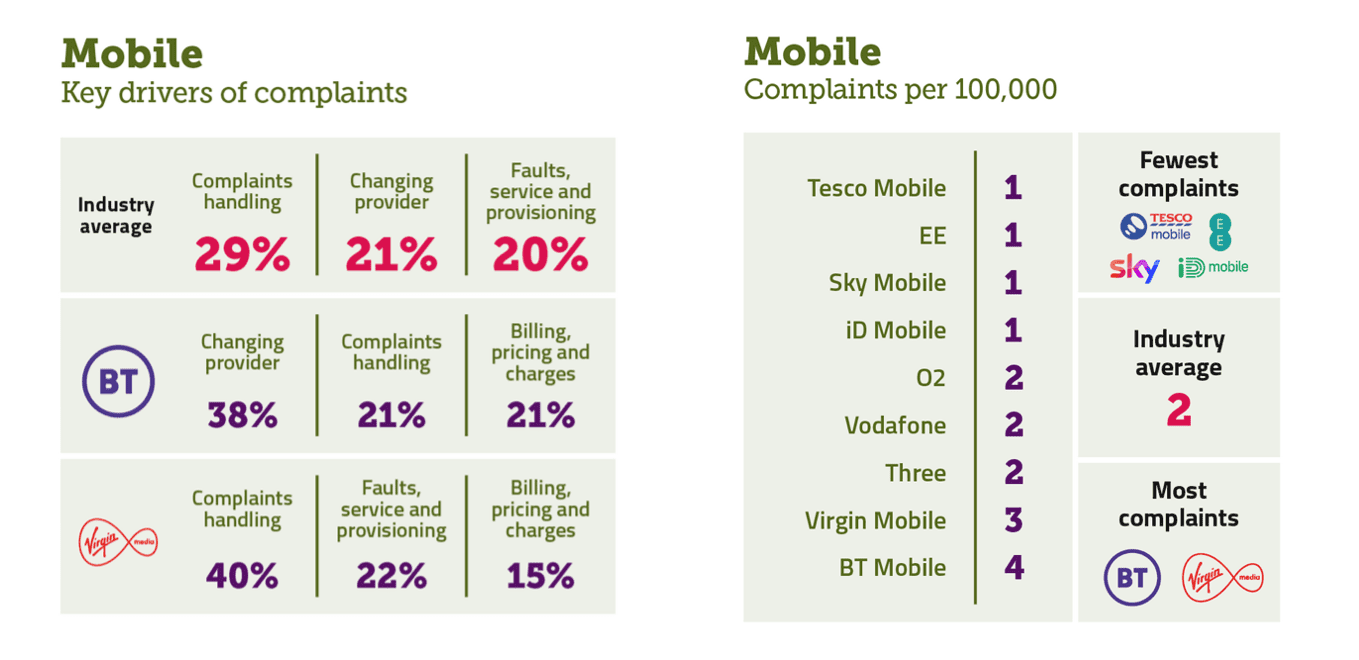 Source: Ofcom
Source: Ofcom
Another common reason for customer dissatisfaction is billing, pricing, and charges. There are several remedies to address this.
First and foremost, telecom providers must stop overcharging customers. Recently, all four major mobile network operators (MNOs) in the UK faced a £3bn legal claim for overcharging customers for phones beyond their contract period. While these practices often go unnoticed by customers initially, once they surface, they can severely damage customer loyalty and brand reputation, triggering negative word-of-mouth.
Another issue is the lack of communication regarding remaining balances. Last year, we analysed over 8,000 App Store and Google Play reviews of 11 eSIM apps, uncovering some important insights:
- 10 out of 11 apps offered some form of balance indicator, but many were flawed. At best, the data balance synced every few hours; at worst, the app showed users still had plenty of data when they had actually run out, leaving them without internet access.
- Only a few providers sent notifications through emails or push alerts when data balances were low. Many allowed users to run out of data without warning, leading to negative reviews and customer churn.
- Not all providers proactively checked whether the user’s phone was eSIM-compatible. Many allowed users to purchase eSIM plans on devices that were not compatible, resulting in frustration and negative word-of-mouth.
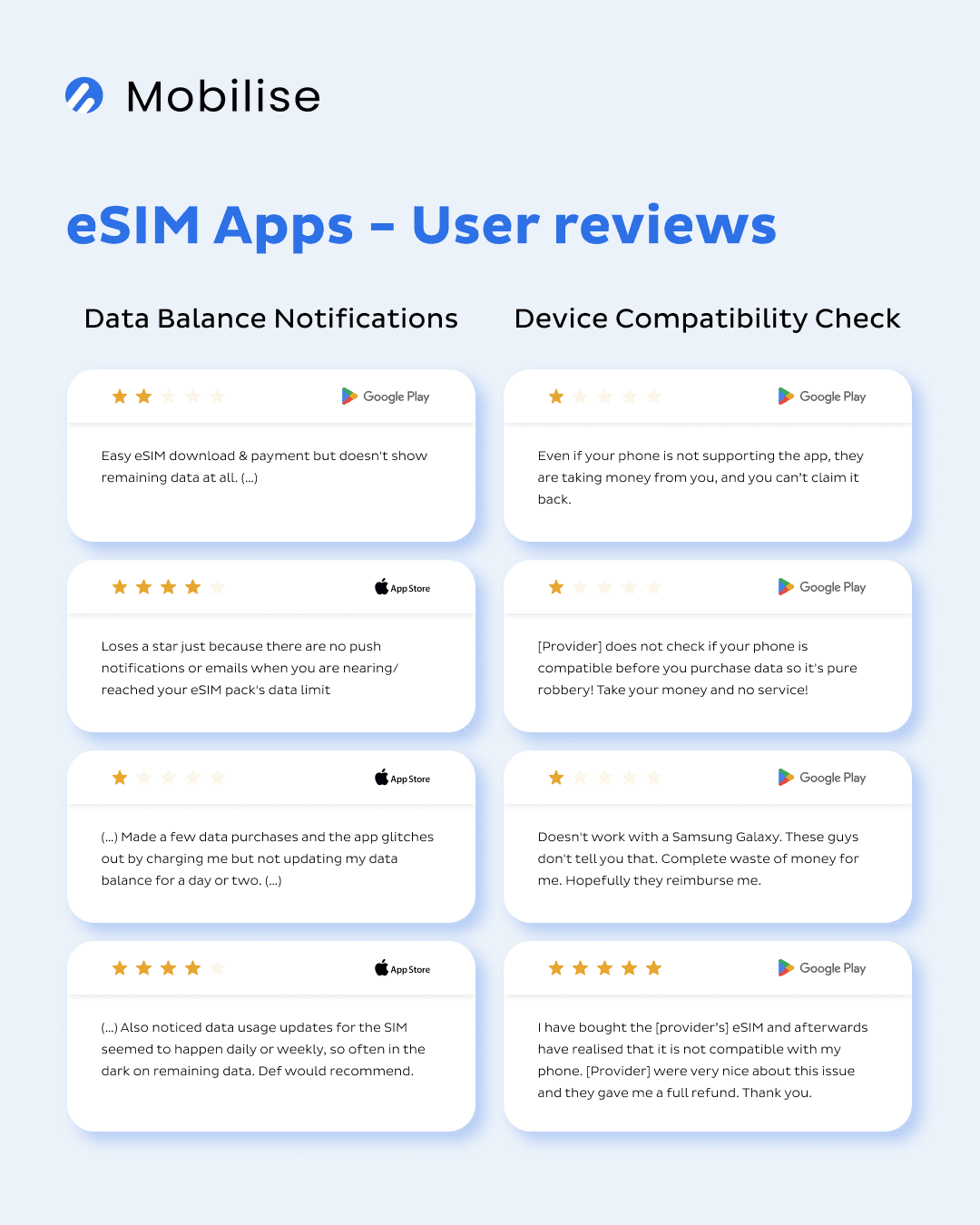
All these issues could have been addressed before escalating into negative reviews. The solution lies in reviewing the customer journey and identifying points where customers may feel confused, lost, or in need of further information. After all, only 1 in 26 unhappy customers actually file a complaint—the rest simply leave without saying a word.
Introduce or improve value-added services (VAS)
Basic, minimal, and unappealing services are often a key reason for low customer loyalty in telecom. While a segment of customers remain loyal because you provide the essential services they need at the lowest price, this group doesn’t represent your entire customer base. The rest are unlikely to return unless you give them a compelling reason to stay. One effective way to engage customers and foster loyalty is through the offering of value-added services (VAS).
VAS refers to additional features that can be integrated into core products to enhance the user experience or serve as stand-alone offerings. The mobile VAS market is projected to reach $880.4 million in 2024 and grow at a compound annual growth rate (CAGR) of 14.9%, reaching $3,522.6 million by 2034. This growth is largely driven by the increased use of mobile apps and web services, with OTT media services like video and music gaining significant traction.
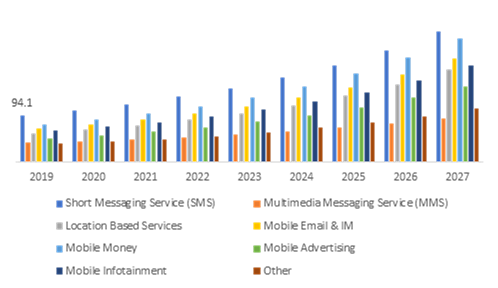 Source: Research Dive Analysis
Source: Research Dive Analysis
Additionally, customers expect VAS to be convenient and personalised to their specific needs, behaviours, and interests. They seek personalised content recommendations and customised notifications. In fact, 45% of telecom customers say that personalised promotional messages could influence them to purchase additional services.
One effective way to implement VAS is by bundling them with core services. According to research, 79% of telecom customers would be more loyal to a brand that offers “super bundling”. In comparison, 59% would consider leaving their current mobile, broadband, or TV provider if a super bundling option were offered elsewhere. However, for VAS to truly drive customer loyalty, it must provide extra convenience, entertainment, or functionality that enhances the overall customer experience.
Moreover, three out of four app users prefer a single telecom app that includes multiple diverse functions, such as entertainment content, rewards, and games. Expanding app functionalities can significantly increase user engagement, boosting brand affinity—brand loyalty surges by 40% as users move from app awareness to onboarding. This engagement continues to rise by 31% as onboarded users evolve into regular app users.
Leverage emerging technologies
The last key strategy to improve customer loyalty in telecom is embracing emerging technologies. Relying on outdated technology and neglecting the latest tech trends can cost telecom providers more than customer loyalty—significantly hindering growth and competitiveness.
Emerging technologies like artificial intelligence (AI) can enhance various aspects of telecom services, from personalizing customer experiences to improving proactive customer support and communication. AI in telecom helps providers anticipate customer needs and issues, leading to more seamless and proactive service delivery.
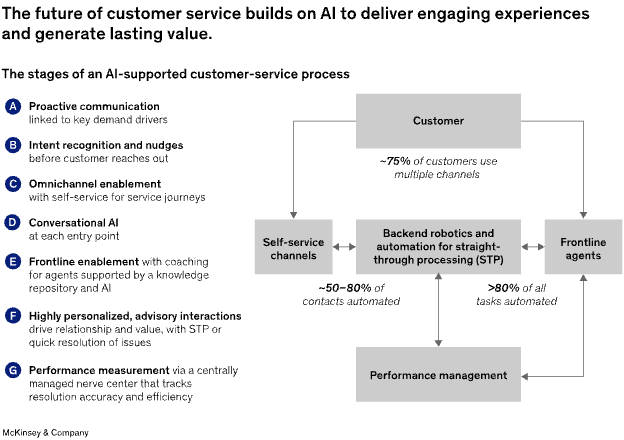 Source: McKinsey & Company
Source: McKinsey & Company
Even though AI is still relatively new in the telecom industry, companies that have adopted it are seeing impressive results. According to McKinsey & Company, 67% of telecom providers report an increase in revenues due to AI implementation, with 19% of respondents noting that their revenue growth exceeded 10%. The primary goal of introducing AI is to optimise customer experience and reduce churn, a claim supported by 48% of telecoms. For generative AI, this number rises to 57%.
While there are still limited reports and surveys that measure AI’s full impact on the telecom industry, the available data suggests that it’s a worthwhile investment. The global AI in telecommunications market was valued at $1.2 billion in 2021 and is projected to reach $38.8 billion by 2031, growing at an astounding compound annual growth rate (CAGR) of 41.4% from 2022 to 2031.
Conclusion
In summary, improving customer loyalty in telecom requires a multi-faceted approach. Personalising customer experiences, implementing effective loyalty programs, providing excellent customer support, offering value-added services (VAS), maintaining proactive communication, and leveraging emerging technologies such as AI are all essential strategies for fostering long-term customer relationships and reducing churn.
Telecom companies must prioritise these areas and invest in loyalty programs while keeping pace with the latest technological advancements. By doing so, they can create a strong competitive edge, improve customer satisfaction, and ultimately increase revenue growth.
As customer expectations continue to evolve, so too must the strategies to retain them. Continuous innovation and a commitment to enhancing the overall customer experience will be the key to sustaining loyalty in the ever-changing telecom industry.



